Sanatan Dharam (Hinduism) is described as both monotheistic and polytheistic depending on how you interpret the many deities and their relationship to the ultimate reality, Brahman, with the belief that God manifests in many forms, and therefore, it is up to the worshippers how they choose to worship. It has garnered a myriad of Gods and Goddesses as a result. Hinduism can be said to be monotheistic but pluralistic. Many Hindus see the various gods and goddesses as different manifestations or aspects of one supreme being, Brahman.
Among practicing Hindus, a variety of religious rituals and attitudes have manifested from worshipping our Gods in form of deities. Hindu temples consecrate the sacred space with manifestation of the Absolute in form of murti, usually carved in stone depicting a form of the Gods. Murti is not God but a representation of the formless, thus a symbol of Gods. Our temple has murtis of the following deities.
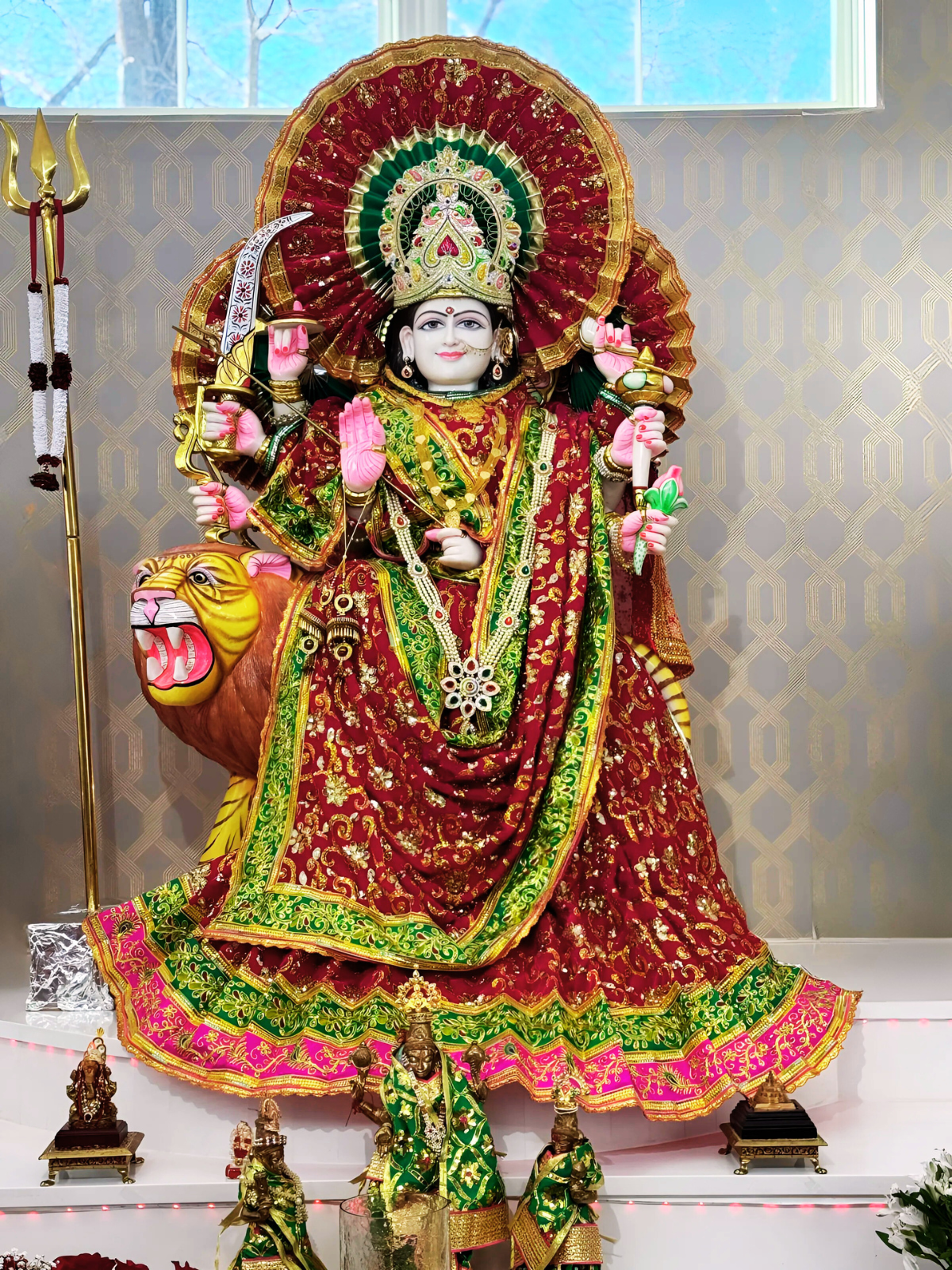
Maa Durga
Maa Durga is a central figure in Hinduism, representing the divine feminine energy, Shakti, and is often referred to as the Divine Mother. She is renowned for her strength and power, especially her ability to combat evil. Durga is depicted as a warrior goddess, frequently riding a lion or tiger, with multiple arms wielding weapons to defeat demons and protect her devotees.
Durga is revered as a symbol of strength, resilience, and protection against negative forces. Her most well-known story involves defeating the demon Mahishasura, representing the ultimate victory of good over evil.
Despite being a formidable warrior, she is also considered a nurturing and compassionate motherly figure.
Durga is widely worshipped during the Navratri festival, a vibrant celebration of her victory and divine powers. She is often depicted with ten arms, each holding a unique weapon or emblem, symbolizing her diverse powers and her ability to protect from all directions.
Lord Shiva
The Destroyer, Restorer, and Creator
Lord Shiva is a major Hindu deity, revered as the destroyer, restorer, and creator of the universe. As part of the Hindu Trimurti (with Brahma and Vishnu), he is the patron of Shaivism, a prominent sect that considers him the supreme being. Shiva embodies a complex, often contradictory nature, encompassing both asceticism and sensuality. His role involves dismantling and renewing the universe for cyclical regeneration. He can appear as a fierce slayer of demons or a kind protector of devotees. His consort, Parvati, balances his character, allowing him to express both ascetic and sensual aspects within a relationship. He is also the father of Ganesha and Kartikeya.
Symbolism and Significance
Known as Adiyogi, the first yogi, Shiva is the patron of yoga, meditation, and the arts. He is often depicted with distinctive attributes:
Serpent Vasuki: Around his neck.
Crescent Moon: On his head.
Holy River Ganga: Flowing from his hair.
Trident (Trishul): His weapon.
These symbols represent his various powers and characteristics. Shiva’s multifaceted nature is known by many names, including Mahadeva (great God), Bholenath (the innocent lord), and Rudra (the fierce one).
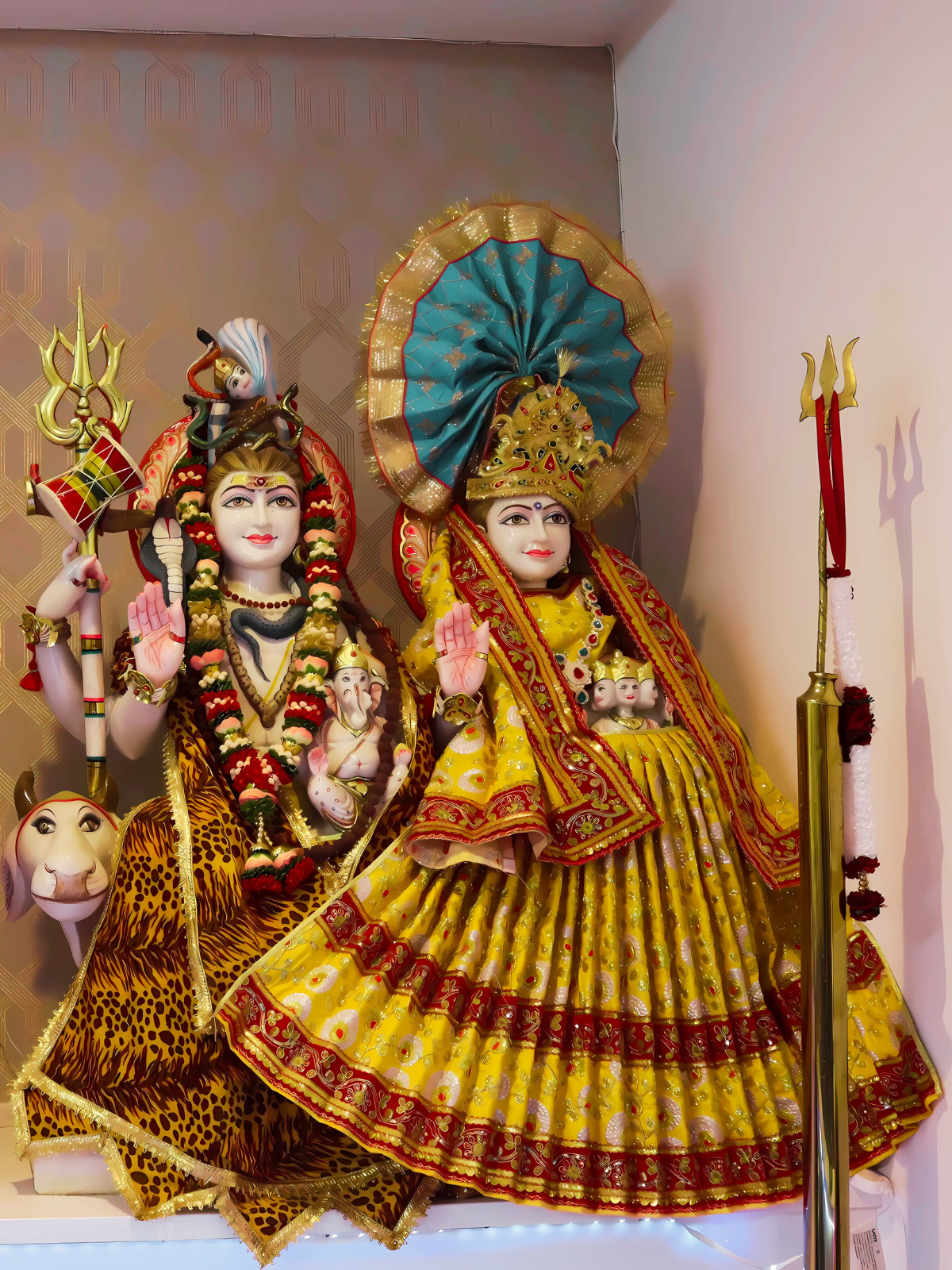
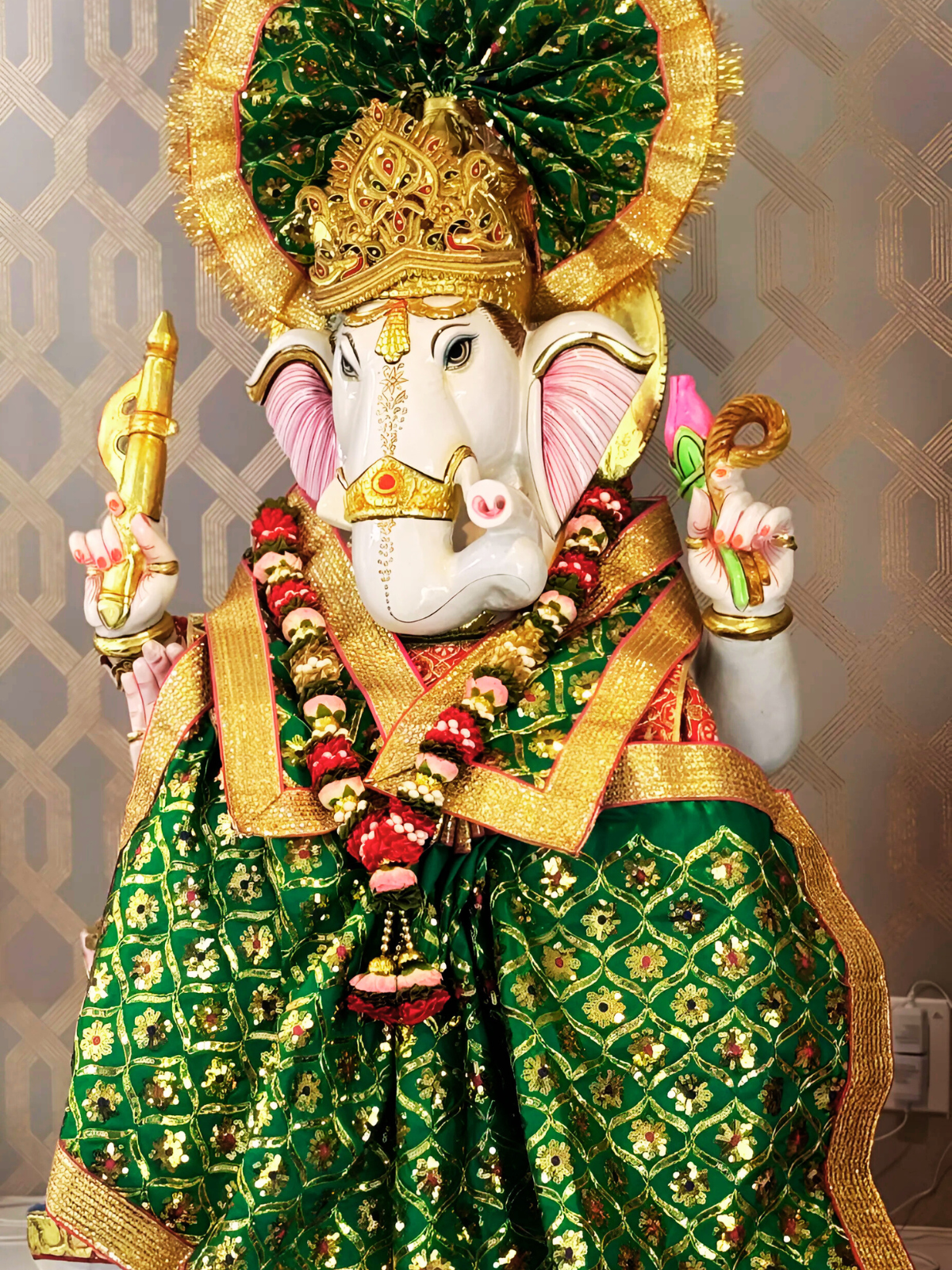
Lord Ganesha
Ganesha, also known as Ganapati, is a revered Hindu deity with an elephant head and human body, recognized as the remover of obstacles and the god of beginnings. His elephant head signifies wisdom and the ability to overcome challenges.
His large belly symbolizes his capacity to absorb life’s experiences and represents the vastness of the cosmos, protecting the world and ensuring joy.
It also represents the seeker’s hunger for knowledge. His broken tusk is associated with his role as a scribe, writing the epic Mahabharata. Ganesha is the patron of arts and sciences, students, travelers, and commerce.
He’s traditionally invoked at the start of new ventures to ensure success and is worshipped for good fortune, wisdom, and protection. His birth is celebrated during the vibrant Ganesh Chaturthi festival.
The name “Ganesha” denotes his leadership and mastery. He is also worshipped in Jainism and Buddhism. In essence, Ganesha embodies wisdom, intellect, good luck, and the ability to navigate life’s challenges.
Shri Ram Parivar
The Ram Parivar, or Ram Darbar, in Hindu mythology represents the divine family of Lord Rama, an avatar (incarnation) of Vishnu, one of Hinduism’s most important deities. This sacred family includes: The central figure, embodying righteousness (dharma) and ideal leadership.
Sita: Rama’s wife considered an incarnation of Goddess Lakshmi, symbolizing purity and devotion.
Lakshmana: Rama’s younger brother, known for his unwavering loyalty and dedication to serving his brother.
Hanuman: A devoted follower of Lord Rama and a powerful monkey king who played a crucial role in rescuing Sita from the demon king Ravana.
The story of the Ram Parivar is primarily told in the epic Ramayana, which recounts: The Ram Parivar symbolizes ideal relationships, duty, righteousness, loyalty, and unwavering devotion. Their timeless story serves as a profound source of inspiration and moral guidance in Hindu culture, emphasizing virtues such as courage, sacrifice, and adherence to dharma.
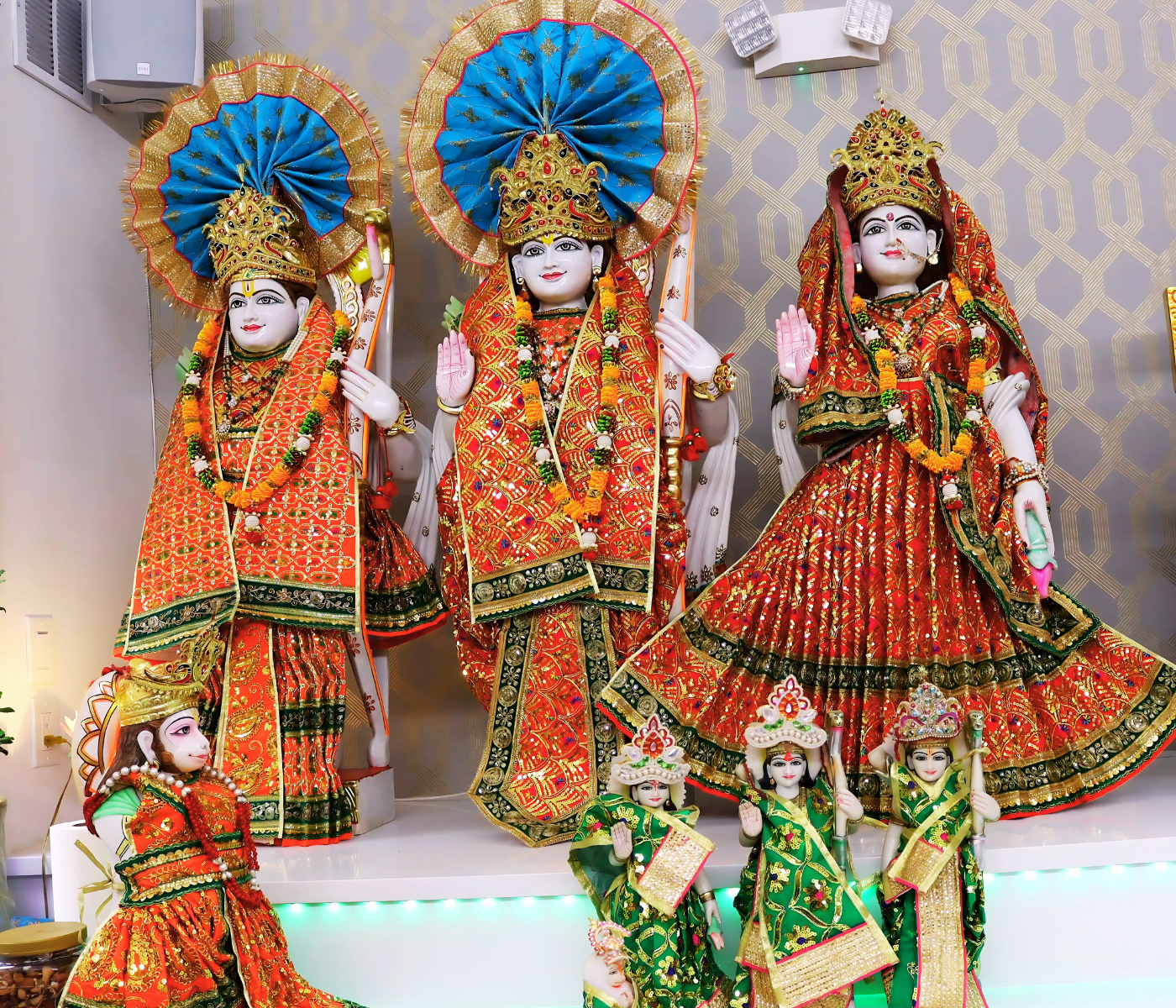
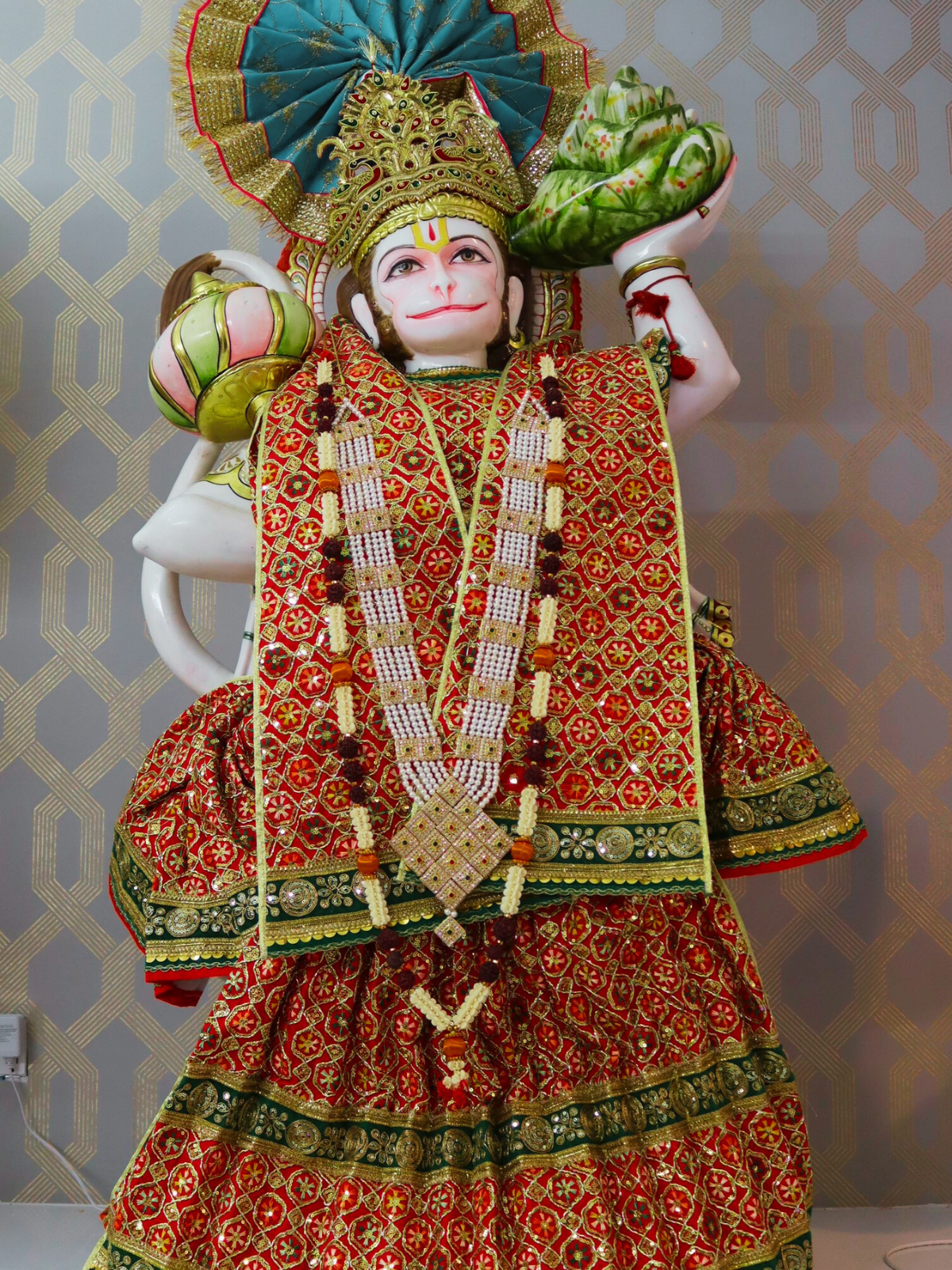
Shri Hanuman
Hanuman is a highly respected god in Hindu tradition and a main character in the Ramayana. He is depicted as a powerful and intelligent monkey warrior (Vanara) who exhibits extraordinary loyalty and devotion to Rama in his quest to rescue his wife, Sita, from the demon king Ravana.
Hanuman is considered a perfect blend of strength, intelligence (buddhi), and wisdom (vidya) and a prime example of a bhakti yogi. His birth is commonly attributed to the wind god Vayu and a Vanara named Anjana, he is also considered an avatar of Shiva.
Mystic Perfections (Siddhis); Hanuman possesses eight siddhis or mystic perfections. These abilities are seen as a connection to the Divine.
When Hanuman was a young child, he mistook the sun for a fruit and tried to grab it. Indra, the king of heaven, felt threatened by his power and struck Hanuman down with a thunderbolt, breaking his jaw. This is how he got his name, Hanuman, which means “prominent jaw.” Later, due to youthful mischief, he was cursed to forget his powers until he was reminded. This curse was lifted during the search for Sita when the bear king, Jambavan, reminded him of his true prowess.
Today. Devotees pray to Hanuman, by reciting the Hanuman Chalisa, to attain similar spiritual connection and strength. It’s also widely believed that Hanuman is present wherever the glorious stories of Rama are discussed.
Radha Krishna; The Embodiment of Divine Love
Radha-Krishna is a combined Hindu deity representing the divine love between Lord Krishna and his chief consort, Radha. They embody both masculine and feminine divine energy, with Radha symbolizing Krishna’s Shakti (feminine energy).
In Krishnaism, they are considered supreme, representing the union of the individual soul (Radha) with the divine (Krishna). Their love story is a metaphor for the soul’s devotion and ultimate union with the universal self. Radha is regarded as the Supreme Goddess, through whom Krishna finds satisfaction.
Significance and Celebrations
Though not prominent in early texts, Radha’s importance grew significantly, notably after the 12th-century poem “Gita Govinda.” This work depicts their playful interactions in Vrindavan, including Krishna’s antics with the Gopis and divine dances.
The story of Radha and Krishna inspires devotees and is celebrated in various festivals, including Holi, where the tradition of playing with colors originated from Krishna applying colors to Radha’s face.
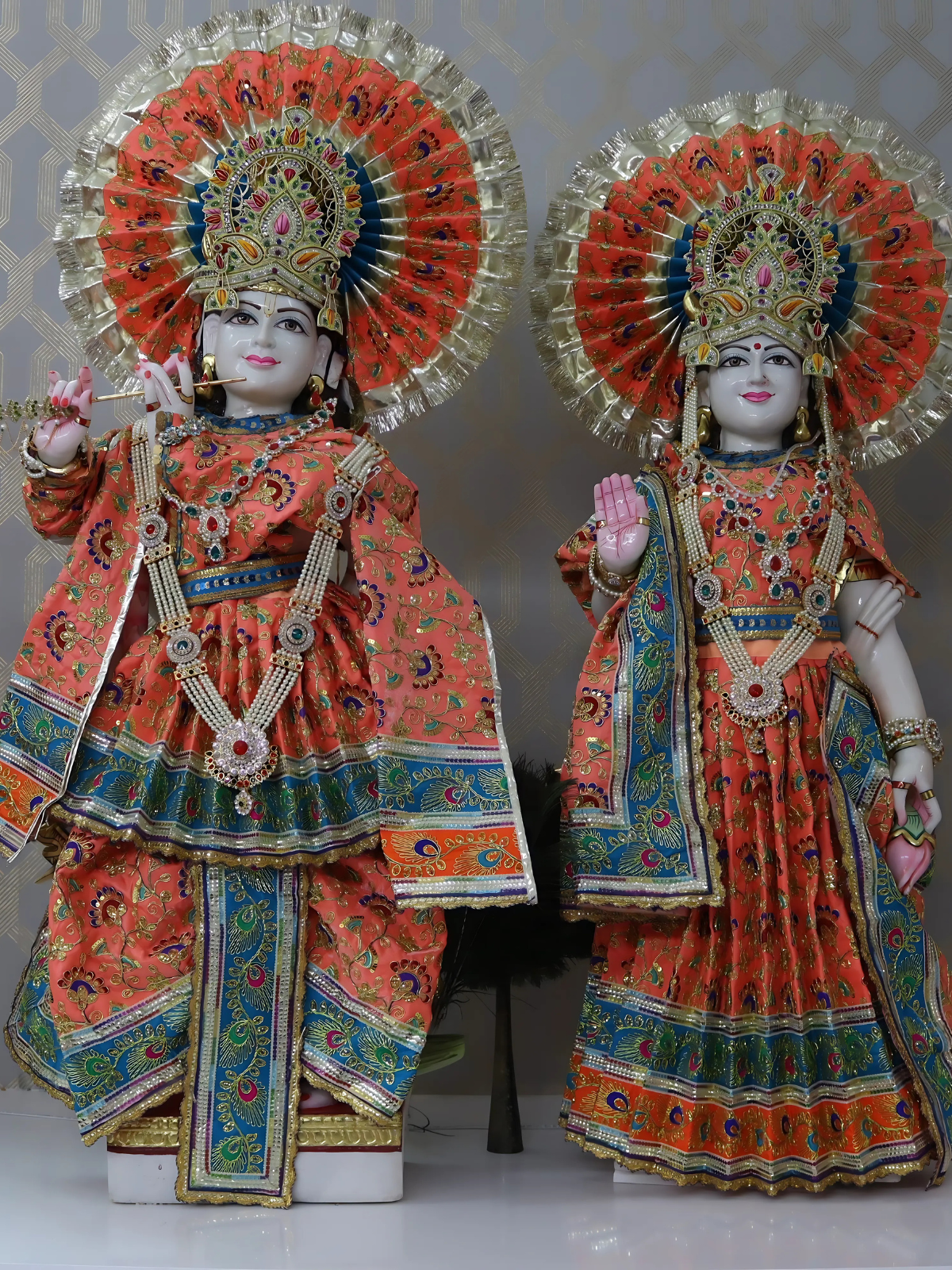
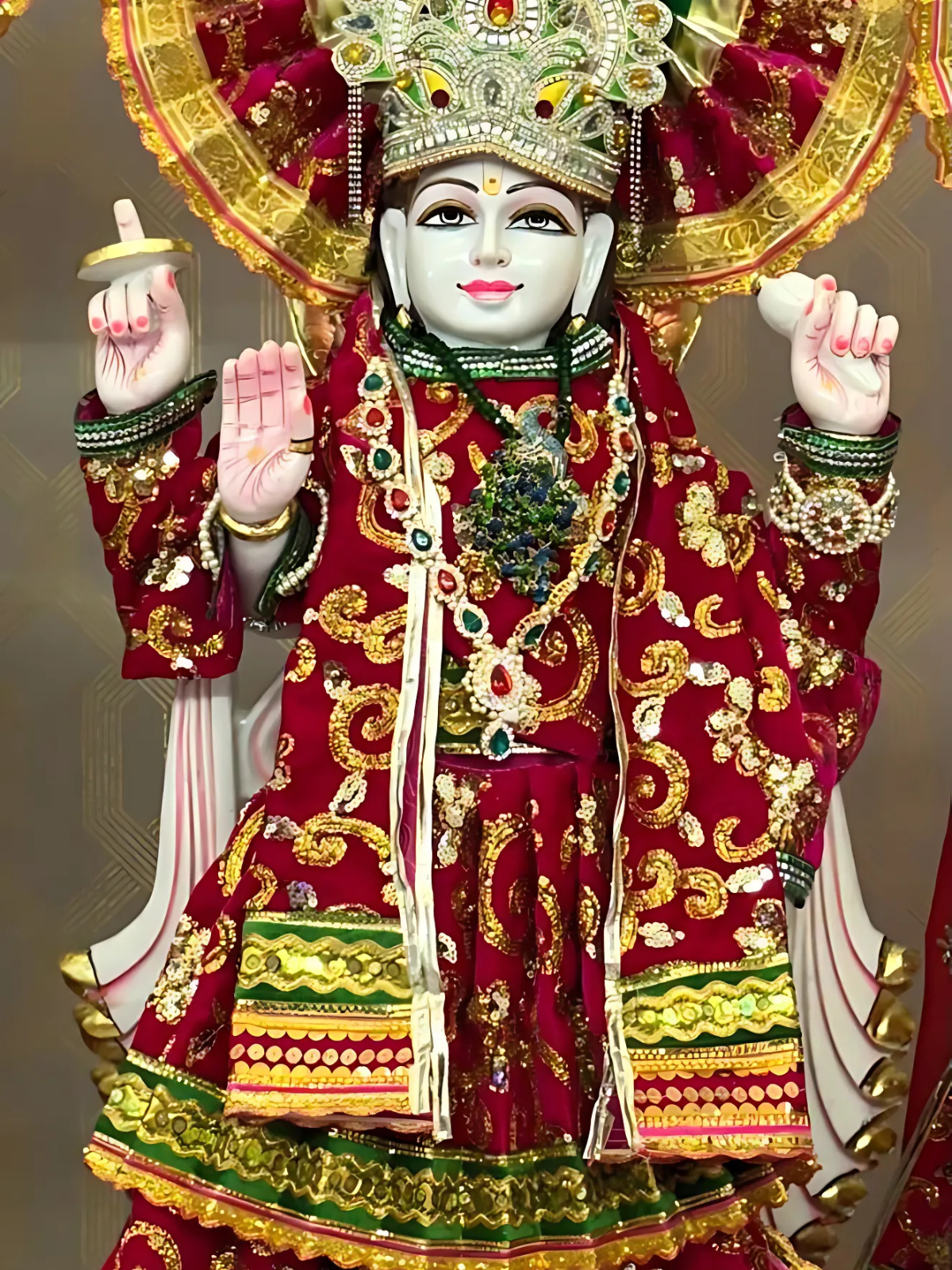
Shri Satyanarayan
A Path to Blessings and Righteousness
The Satyanarayana Puja (or Vratham) is a popular Hindu ritual dedicated to Lord Satyanarayana, an embodiment of truth and righteousness, who is a form of Lord Vishnu.
This puja is performed across India to express gratitude and seek blessings for wealth, happiness, well-being, and success. It’s particularly favored during significant life events like marriage, new jobs, or when couples seek a child, as it helps in overcoming obstacles.
The ritual begins with prayers to Lord Ganesha to clear impediments, followed by specific prayers and offerings to Lord Satyanarayana. A central element is the recitation or listening to the Satyanarayana Katha (story), which emphasizes the importance of truth, devotion, and righteousness, and illustrates the consequences of neglecting vows to the Lord.
Devotees believe Lord Satyanarayana’s grace helps them overcome adversity, live contented lives, and ultimately achieve Moksha (salvation).
A special sweet offering, typically “Sheera” or “Halwa,” is prepared and shared, symbolizing unity and divine blessings. While the puja can be performed on any day, the full moon day (Pournami) and evenings are considered especially auspicious.
This accessible ritual can be performed at home or in temples, even without a priest, bringing prosperity, happiness, success, obstacle removal, spiritual growth, good health, and positive karma.
Maa Lakshmi
Goddess of Wealth and Prosperity
Maa Lakshmi, or Shri, is a central Hindu goddess revered for wealth, fortune, prosperity, beauty, and abundance.
As part of the Tridevi (with Parvati and Saraswati), she is the beloved consort and divine energy (Shakti) of Lord Vishnu, the preserver god.
Lakshmi embodies both material and spiritual wealth, including love, health, knowledge, and well-being.
A popular myth tells of her emerging from the churning of the cosmic ocean, standing on a lotus, symbolizing purity and spiritual potential.
She is particularly associated with Diwali, the festival of lights, when Hindus worship her for blessings and prosperity.
Symbolism and Significance
Typically depicted with four arms, holding lotus buds and showering gold coins, Lakshmi’s arms symbolize the four human life goals: dharma (righteousness), artha (wealth), kama (desires), and moksha (liberation).
Her eight manifestations, the Ashta Lakshmi, each represent a specific source of wealth, such as material prosperity, agricultural abundance, progeny, courage, knowledge, and victory.
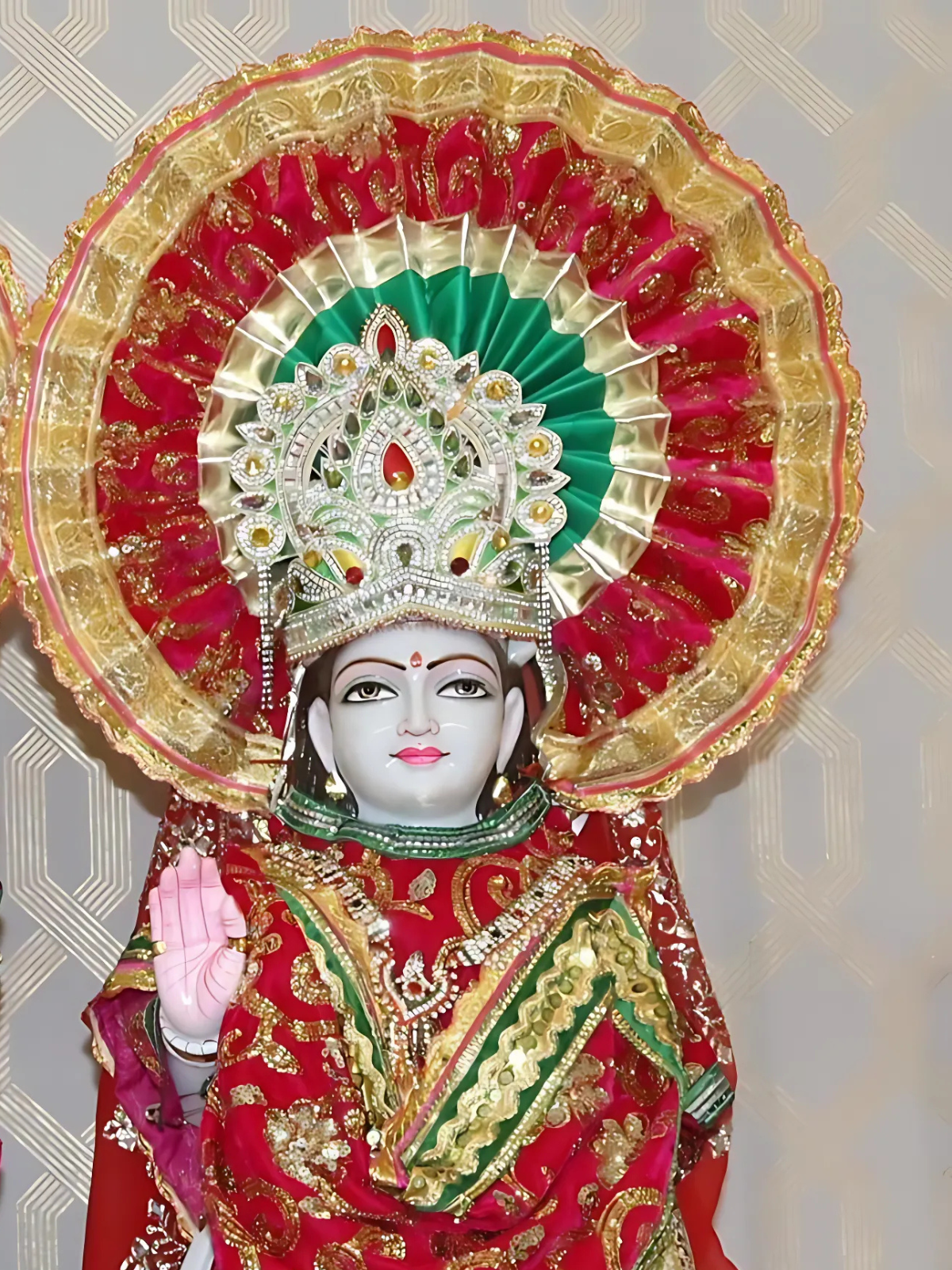
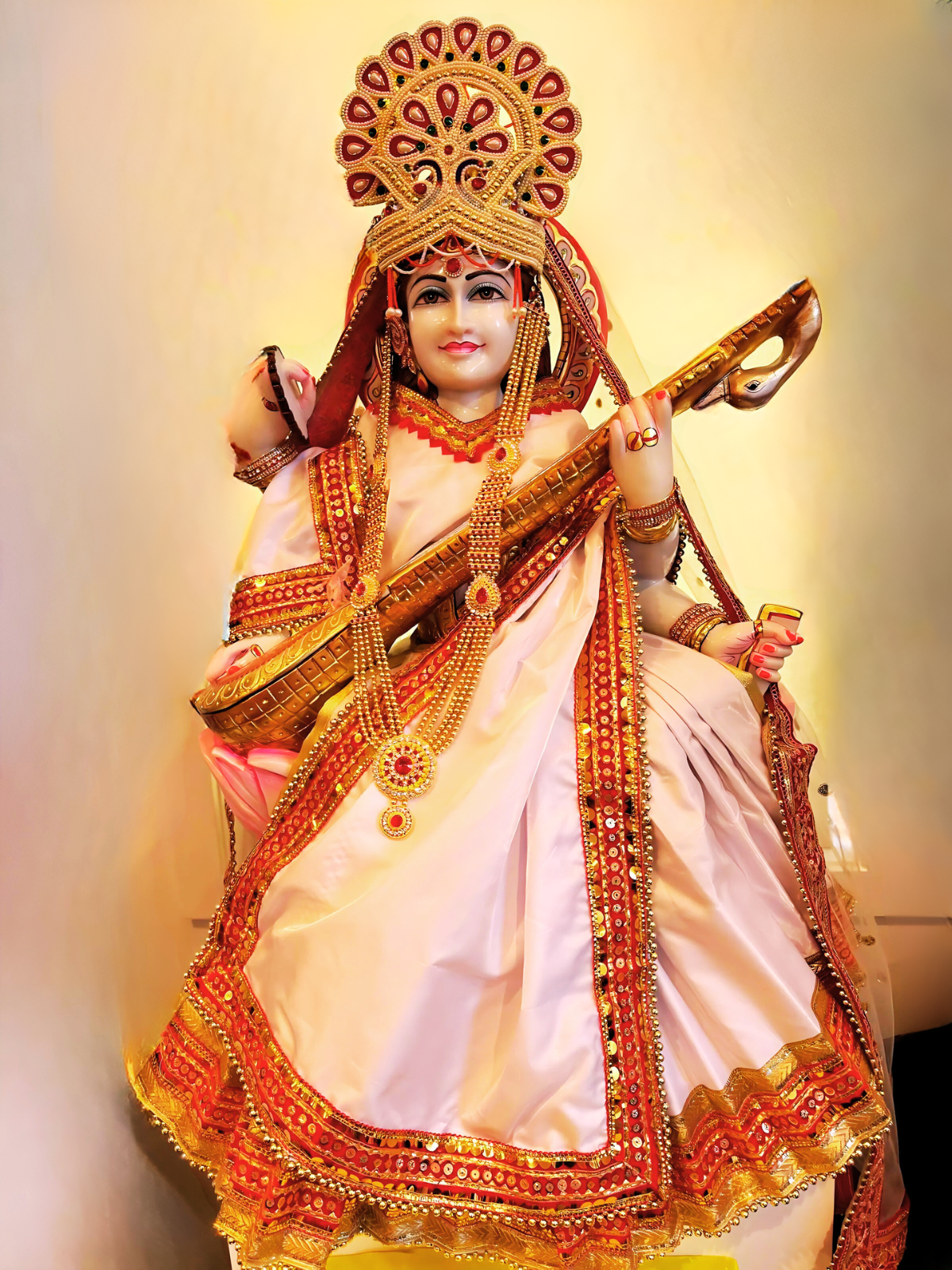
Maa Saraswati
Maa Saraswati is a prominent Hindu goddess, revered as the embodiment of knowledge, wisdom, learning, music, arts, and speech. She is considered the wife or consort of Brahma, the creator god.
Saraswati is the patroness of education, learning, and all forms of artistic expression, including music, poetry, and literature. She represents the pursuit of true knowledge, purity, and discernment, guiding individuals toward enlightenment and spiritual growth.
According to Hindu tradition, she is credited with inventing the Sanskrit language. Saraswati is often depicted with four arms, symbolizing the four aspects of human personality (mind, intellect, alertness, and ego) or the four Vedas (sacred Hindu texts).
She holds symbolic objects like
1. Book/Manuscript: the Vedas and universal knowledge.
2. Veena- A musical instrument symbolizing music and the arts, as well as the need to tune one’s mind and body into harmony.
3. Rosary (Mala) – Represents meditation, spiritual practices, and introspection.
4. Water Pot-Symbolizes purifying power and the ability to discern right from wrong.
She is often depicted riding a swan (Hamsa), representing purity and the ability to distinguish between good and evil, or a peacock, symbolizing beauty and a reminder to be mindful of vanity.
Saraswati is the consort of Brahma and assists him in the creation and maintenance of the universe. Saraswati is widely worshipped, especially by students, artists, and scholars, who seek her blessings for success in their endeavors. Her most significant festival is Saraswati Puja or Vasant Panchami, celebrated in the spring.
Lord Sri Venkateswara
The Preserver and Bestower of Blessings
Lord Sri Venkateswara, also known as Balaji, Srinivasa, or Govinda, is a highly revered Hindu deity. Considered an incarnation of Lord Vishnu, the preserver in the Hindu Trinity, he is the presiding deity of the famous Tirumala Venkateswara Temple in Tirupati, India.
The name “Venkateswara” means “destroyer of sins.” He is believed to have manifested on the Tirumala Hills to protect humanity from the troubles of the Kali Yuga, earning him the title “Kaliyuga Varada,” meaning the bestower of blessings in this age.
Legends and Symbolism
A central legend recounts his marriage to Padmavati, an incarnation of Goddess Lakshmi. This divine union symbolizes the eternal bond between the divine and the human soul. It’s said that Venkateswara borrowed a large sum from Kubera, the god of wealth, for his wedding. Devotees offer wealth at the Tirupati temple to help repay this divine debt, reflecting their unwavering faith.
The idol of Venkateswara in the Tirumala temple is richly adorned with symbolic items like the Shankha (conch, symbolizing creation) and the Chakra (discus, representing the cycle of time). These attributes represent his power to protect devotees, grant blessings, and bring prosperity. His divine presence emphasizes devotion (bhakti), humility, sacrifice, righteousness, perseverance, patience, and gratitude.
The Tirumala Venkateswara Temple is one of the most visited and wealthiest religious sites globally, attracting millions seeking blessings and spiritual solace. Lord Sri Venkateswara is a compassionate deity who offers guidance, protection, and fulfillment to those who approach him with faith and devotion in the Kali Yuga.
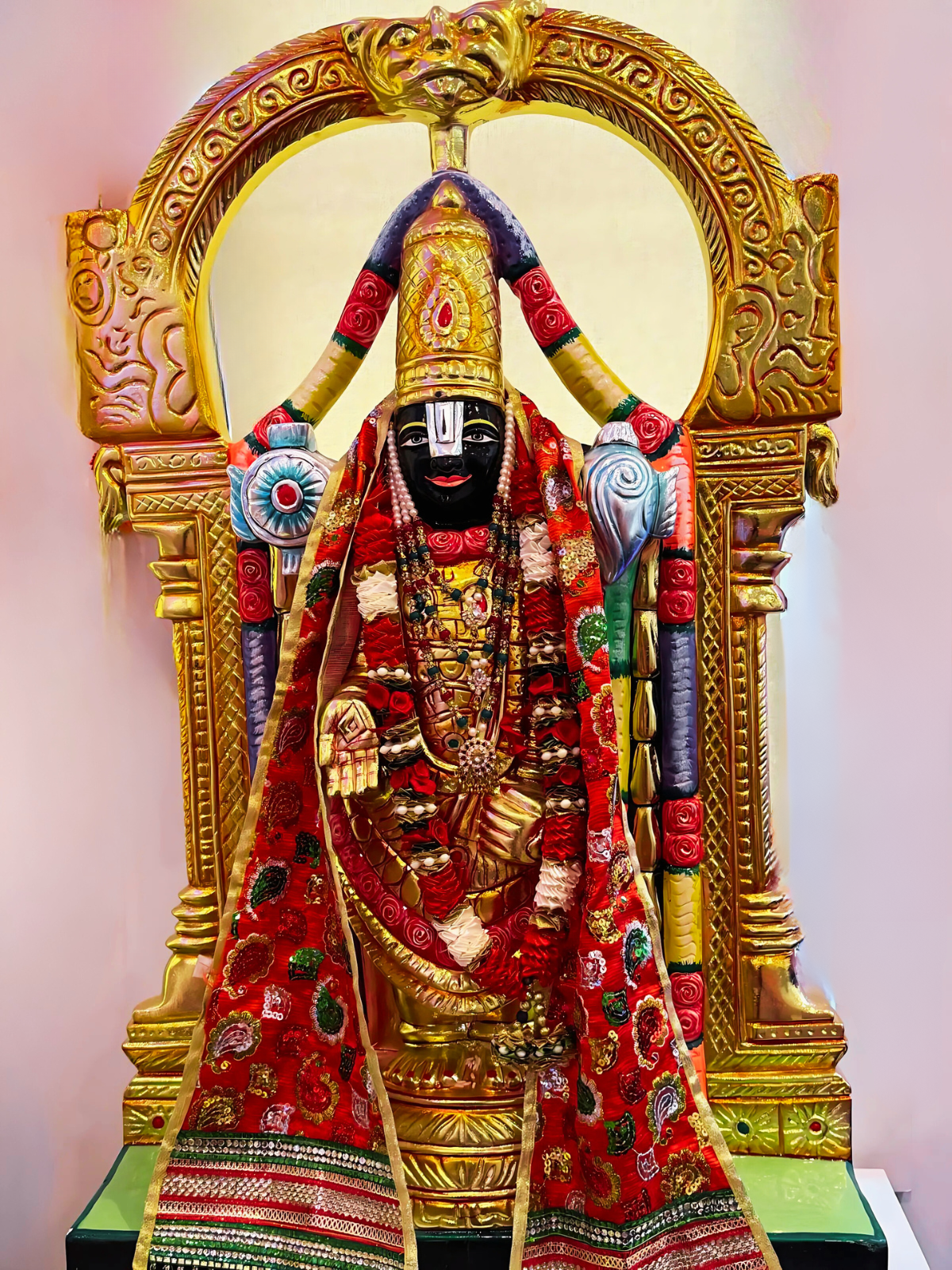
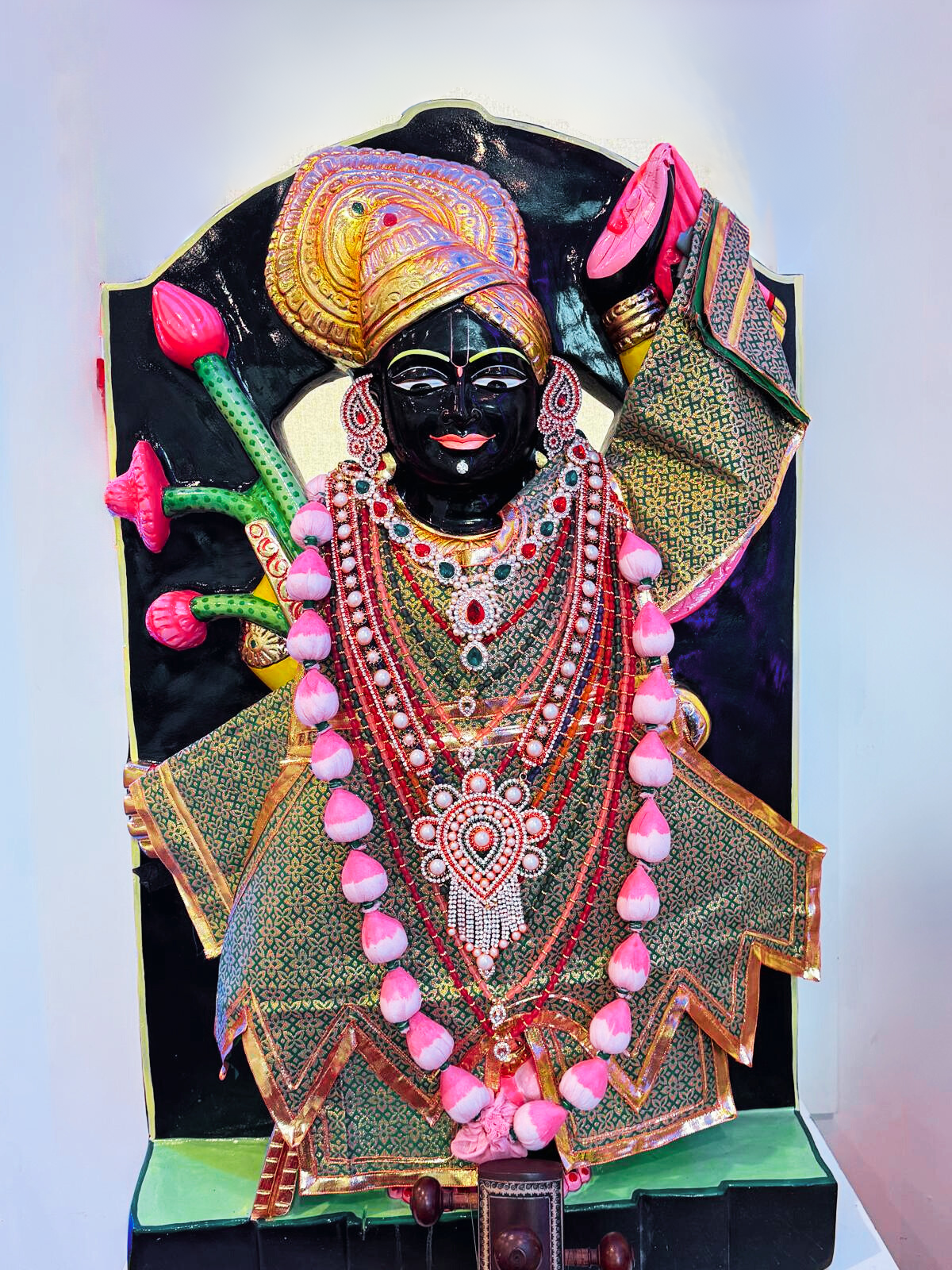
Shrinath Ji
Shrinathji is a revered form of Lord Krishna, depicted as a seven-year-old child. He is the central deity of the Pushtimarg sect, also known as the Vallabha Sampradaya, founded by Vallabhacharya.
Shrinathji is primarily worshipped at the Shrinathji Temple in Nathdwara, Rajasthan, India. This temple town, meaning “Lord’s Gateway,” is a major pilgrimage site for Vaishnavas, especially during festivals like Janmashtami, Holi, and Diwali.
Shrinathji represents the divine playfulness and innocence of Lord Krishna as a young boy.
He is central to the Pushtimarg tradition, which emphasizes devotion (Bhakti Yoga) and divine grace. The main shrine of Shrinathji is in Nathdwara, Rajasthan, a place that has become synonymous with the deity. Devotees seek the “darshan,” or glimpse of the deity, believing it to be a way to experience divine presence.
Shrinithi is often depicted lifting the Govardhan Hill, symbolizing divine protection and strength.
Traditional paintings known as Pichwais, featuring cows and peacocks, also hold deep symbolic meaning related to fertility, abundance, and Krishna’s divine nature. Devotees treat Shrinathji as a living god child, giving special care and attention to his daily worship rituals.
Baba Balak Nath
Baba Balak Nath, also known as Sidh Baba Balak Nath, is a revered Hindu deity primarily worshipped in the northern Indian states of Punjab and Himachal Pradesh. He is often believed to be a reincarnation of Lord Kartikeya, the son of Lord Shiva and Goddess Parvati. Known by other names such as Paunahari or Dudhadhari, he is associated with the Nath tradition and revered as a powerful yogi.
A prominent belief holds that he is a reincarnation of Lord Kartikeya, who took birth to defeat the demon Tarakasur. He is known for his profound devotion and miraculous deeds. His followers seek his blessings for peace, prosperity, and spiritual growth. His main temple is a significant pilgrimage site known as Deotsidh, located in a natural cave at Chakmoh village in Hamirpur, Himachal Pradesh.
A famous story recounts his time as a shepherd for a woman named Ratno Mai, during which he displayed his miraculous powers. He proved he hadn’t consumed the rotis and lassi she brought him by revealing them in a tree trunk and generating a spring of buttermilk. Legends also connect him to Lord Shiva, with whom he is believed to share a deep spiritual bond.
He is regarded as a Brahmachari (celibate). Due to this, women are traditionally restricted from entering the inner sanctum of the cave temple at Deotsidh. In essence, Baba Balak Nath is a cherished deity in northern India, revered as a manifestation of divine power and a source of blessings for his devotees.

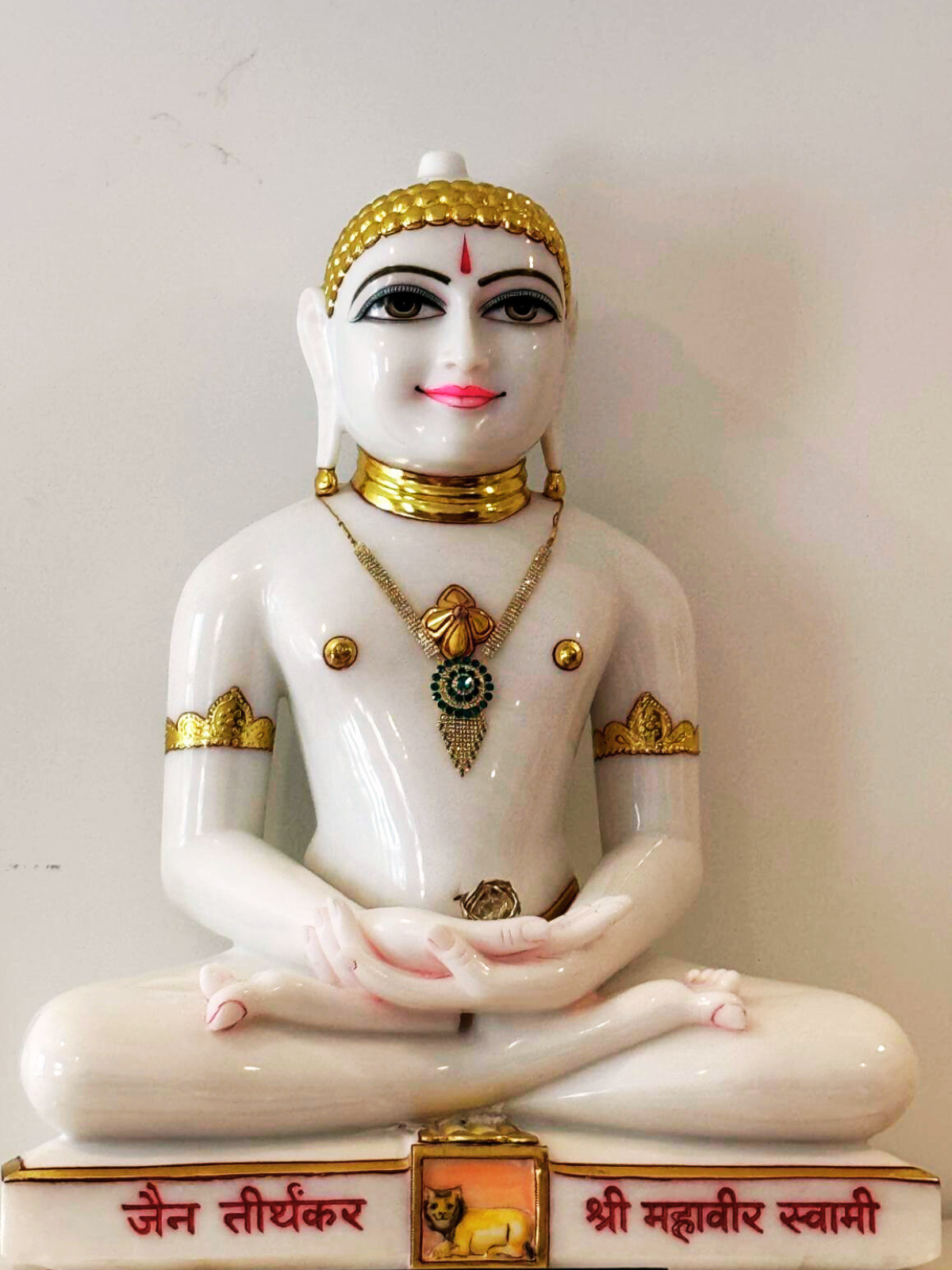
Shri Mahavir Bhagwan
The 24th Tirthankara of Jainism
Bhagwan Mahavira, the 24th Tirthankara in the Jain tradition, was born Vardhamana in 599 BCE in Kundagrama, Bihar, India. Son of King Siddhartha and Queen Trishala, he was destined for a spiritual path. At the age of 30, Mahavira renounced his royal life to pursue spiritual enlightenment. For twelve and a half years, he practiced extreme austerities and meditation, meticulously adhering to Ahimsa (non-violence) towards all living beings.
Enlightenment and Teachings
At 42, Mahavira attained Kevala Jnana (omniscience), a state of complete enlightenment and understanding of existence. He then spent the next 30 years teaching the core tenets of Jainism: non-violence, truthfulness, non-stealing, chastity, and non-attachment.
Revered as the founder of Jainism, Mahavira’s teachings on self-discipline and the pursuit of spiritual knowledge continue to guide Jains globally. His life stands as a testament to the transformative power of spiritual discipline and the unwavering pursuit of truth, remembered for his courage, compassion, and steadfast commitment to non-violence.
Shri Sai Baba of Shirdi
Shirdi Sai Baba was a revered Indian spiritual master who lived in the village of Shirdi, Maharashtra, India. He is widely known for his teachings, miracles, and his ability to inspire devotion in both Hindu and Muslim communities. Baba arrived in Shirdi as a young man, initially as a faqir, and lived a simple, ascetic life. He is known for his humility, compassion, and unwavering devotion to the divine.
Sai Baba arrived in Shirdi as a young man, dressed as a faqir, and initially faced ridicule from some villagers. He lived a simple, ascetic life, often meditating under a neem tree, later became known as Dvarakamai. Sai Baba was known for performing miracles and teaching through simple, often paradoxical, parables. His teachings emphasized love, forgiveness, and helping others.
His famous saying, “Sabka Malik Ek” (One God governs all), reflected his universalistic approach to spirituality, transcending religious boundaries. Sai Baba’s teachings and influence have spanned generations, and he continues to be a source of inspiration for devotees worldwide.
Sai Baba is believed to have performed numerous miracles, including healing the sick, averting accidents, and granting wishes. One well-known story involves him lighting lamps with water instead of oil.
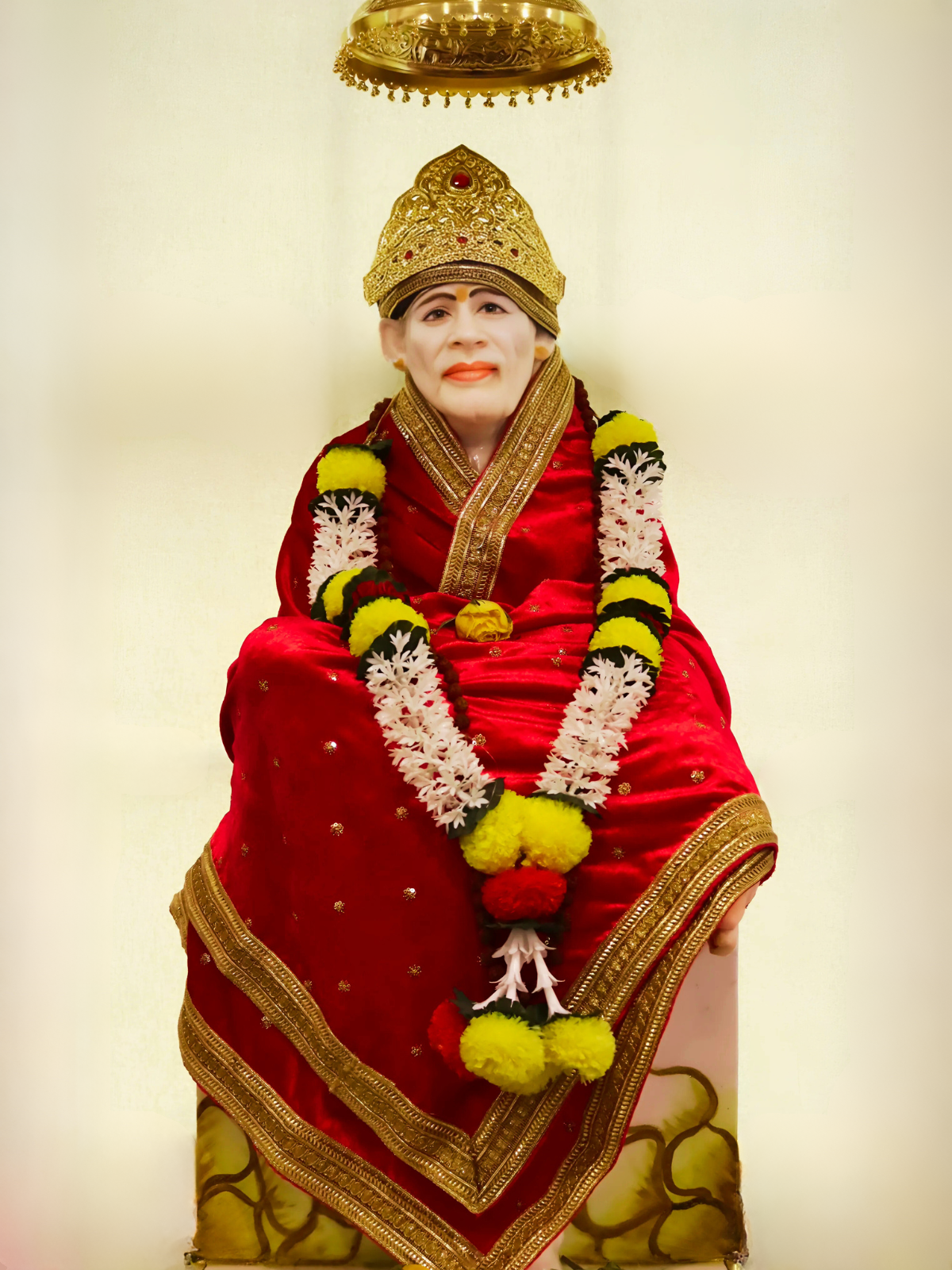
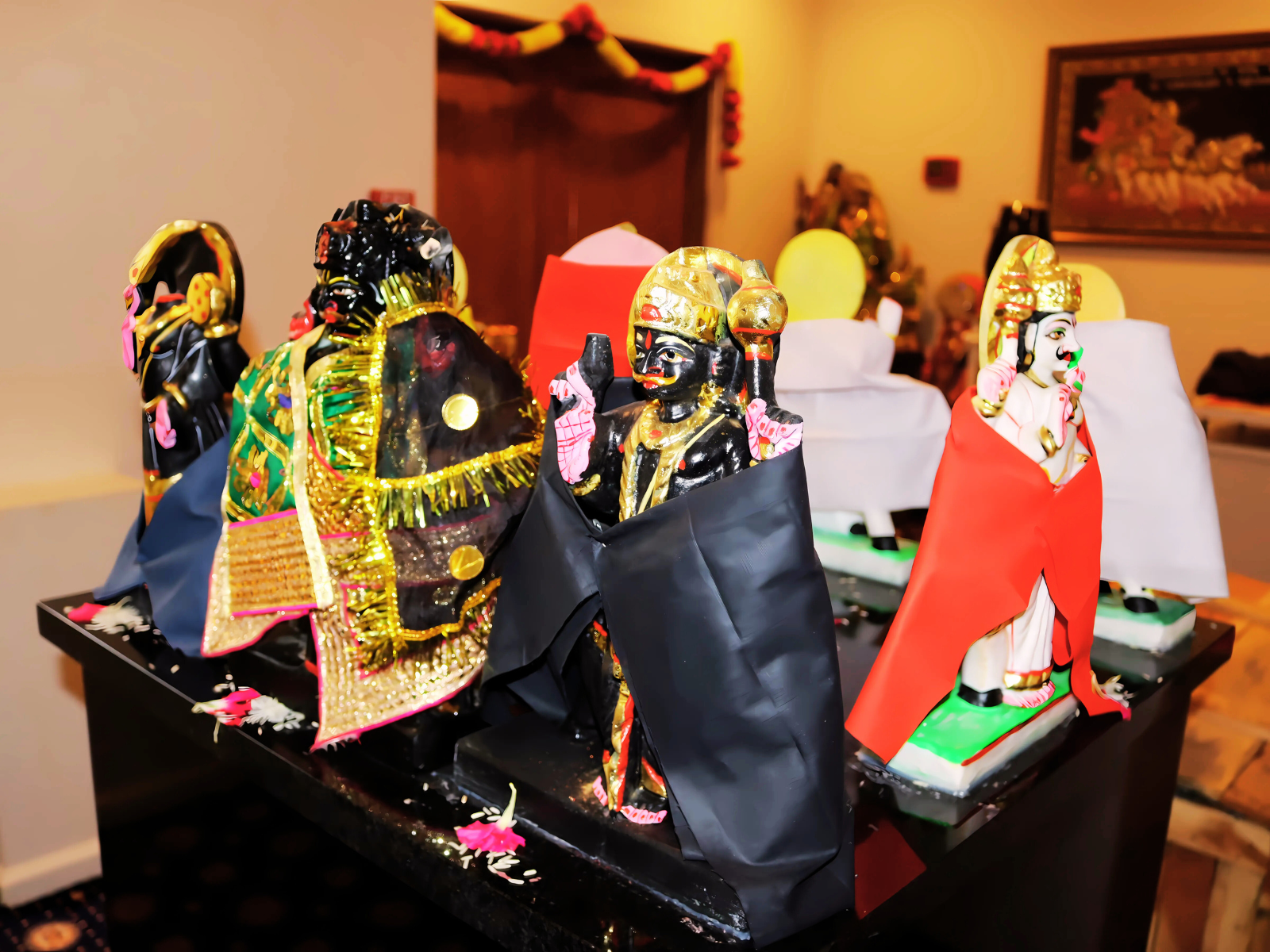
Navagrahas
Navagraha, a Sanskrit term meaning “nine planets,” refers to the nine celestial bodies that, according to Hinduism and Hindu mythology, are believed to exert a significant influence on human life on Earth.
The Navagraha comprise the Sun (Surya), Moon (Chandra), Mercury (Budha), Venus (Shukra), Mars (Mangala), Jupiter (Brihaspati), Saturn (Shani), and the two lunar nodes, Rahu and Ketu. These celestial bodies are considered deities and are thought to affect various aspects of a person’s life, including health, wealth, relationships, and spiritual growth, as per Hindu astrology (Jyotisha).
Hindus, and some Jains and Buddhists, perform specific rituals to appease the Navagraha and mitigate any potential negative influences. Many Hindu temples feature dedicated shrines for the Navagraha, where devotees can offer prayers and seek blessings.
Each Navagraha is associated with a specific deity and embodies distinct qualities and energies. For instance, the Sun is linked to Lord Rama and influences confidence and vitality, while the Moon is connected to Lord Shiva and affects emotions and intuition. Beyond astrological interpretations, understanding the inner significance of the Navagraha through prayer and reflection can lead to a deeper understanding of oneself and one’s place in the universe.





